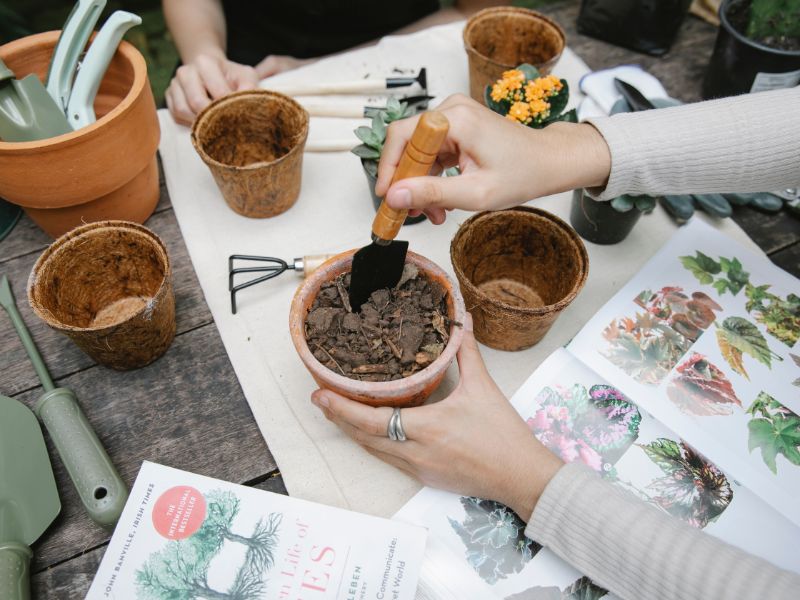We’re thrilled to share our secrets for the perfect DIY potting mix. We’ll guide you through the basics of soil, the essential components for a homemade mix, and specific recipes for succulents and general houseplants.
We can’t wait to help you create the best soil for your plants. Let’s dive in, get our hands dirty, and give our green friends the nourishment they deserve. Trust us, your plants will thank you!
Understanding the Basics of Soil
Before we delve into creating our own DIY potting mix, we’ll need to understand the basics of soil and its crucial role in plant health. Soil isn’t just lifeless dirt; it’s a dynamic blend of organic matter, minerals, and living organisms.
It’s the foundation of plant life:
- Providing roots with nutrients
- Water
- Air
We’ve got three primary components in soil:
- Sand
- Silt
- Clay
Each plays a vital role in the soil’s structure and fertility. Too much clay and the soil becomes compact and drains poorly.
Too much sand, and we lose nutrients and water. That’s why we aim for a balanced mix when creating our potting soil. Understanding this helps us tailor our mix to our plants’ specific needs.

Essential Components for DIY Potting Mix
Now, let’s dive into the essential components we’ll need for our DIY potting mix. First off, we’ll need a base. We recommend peat moss or coco coir, both excellent for water retention yet breathable. Next, we’ll add compost – a vital source of nutrients.
This can be a mix of green kitchen scraps, shredded leaves, or well-rotted manure. We’ll also need perlite or pumice to improve drainage and aeration.
Finally, a handful of sand will provide the necessary grit. But remember, we’re after a light, airy mix that holds water without becoming soggy. So, don’t go overboard with the sand.
With these components in the right proportions, we can create a perfect potting mix for our houseplants.
Recipe for Succulent and Cacti Mix
Let’s dive into our recipe for a succulent and cacti mix, an essential blend for these drought-resistant plants. You’ll need three parts potting soil, two parts coarse sand, and one part perlite.
This mix ensures good drainage, a must for these types of plants. Start by thoroughly mixing the potting soil and coarse sand together.
This combination aids in root development and nutrient absorption. Next, mix in the perlite. It’s crucial for aeration, preventing soil compaction.
Remember, overwatering is the leading cause of death for succulents and cacti, so ensuring a well-draining soil mix is key. That’s it! You’ve created a perfect home for your plants, promoting their health and longevity.
Recipe for General Houseplant Mix
Often, we need a versatile soil blend suitable for a wide range of houseplants, and that’s where our general houseplant mix comes into play.
We’ve found that a balance of three components works best:
- Garden compost
- Coir
- Peat moss
- Perlite
- Vermiculite
Start with equal parts of compost and coir or peat moss. These provide essential nutrients and help retain moisture. Then add a portion of perlite or vermiculite to improve drainage and prevent waterlogging. Mix thoroughly, ensuring all parts are evenly distributed.
Voila! You’ve got a general houseplant mix that’ll support most plants’ needs. Just remember, different plants have unique requirements, so monitor your plants and adjust the mix as necessary.

Tips for Modifying Your Soil Mix
While our general houseplant mix can accommodate a wide variety of needs, it’s important to understand that we can tweak this recipe to better suit specific plant types.
For succulents and cacti, we can add extra perlite or sand to improve drainage. For African violets, we might add more peat for acidity. If we’re nurturing tropical plants, they’ll appreciate additional compost for added nutrients.
DIY potting mix recipes for your houseplants
Remember, the key is to understand your plant’s needs and adjust the soil mix accordingly.
With these simple tips and recipes, we’re confident you’ll be able to whip up the perfect potting mix for your green friends. Happy gardening!






